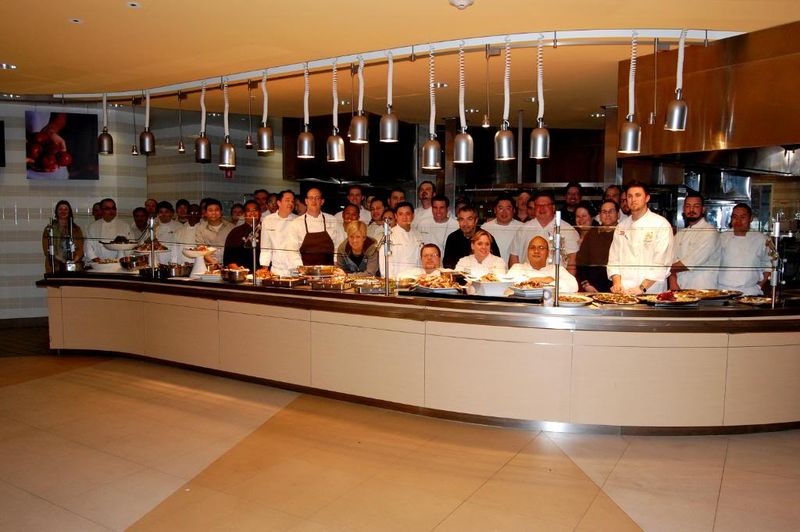Why Bon Appétit Chefs Believe in Going Nose to Tail
- by Guest
Executive Chef David Anderson demonstrates how to separate the ham and loin in his hog butchery demo
Bon Appétit Executive Chef David Anderson from the Stanford Graduate School of Business believes that an animal’s life is worth more than two pork tenderloins. After the recent Northern California Chefs’ Exchange focusing on butchery at Cisco – San Jose, in San Jose, CA, he had this to say about how we use animals in our cooking:
I take no joy out of the death of an animal. As one who’s chosen to eat and prepare animals for consumption, I feel an obligation to reduce the waste as much as possible. Working with local ranchers such as Rani Douglas of Douglas Ranch, who provided the hog for the Northern California Chefs’ Exchange, has taught me a lot about what it takes to bring meat to the plate. And learning more about butchery and use of underutilized cuts has expanded what I offer on menus.”
Consider this: A 200-pound pig supplies only two 16-ounce tenderloins, which is what most chefs want. So what happens to the rest of the animal? After the ribs, belly (bacon), and butt roasts, there are still shanks, picnic shoulder roast, and trotters. Shanks and other braising cuts may be less familiar to cooks than steaks and chops, but they can lend rich flavor and toothsome texture to slow-simmered soups and stews. This type of cooking—in which meat is a supporting player and not the main event—is the kind of low carbon, low waste cooking that Bon Appétit chefs take pride in preparing.
Besides the goals of lowering waste and reducing meat consumption overall, another reason we utilize the whole animal is to support small farmers, who may otherwise have a difficult time selling the less desirable cuts. For chefs, doing so requires skill and creativity and is a great example of sustainability in practice. By highlighting the less familiar, less popular cuts of meat, Bon Appétit chefs hope we inspire customers to do the same thing in their own kitchens.
 The chefs came together to share the food created from the Douglas Ranch hog and Passmore Ranch fish.
The chefs came together to share the food created from the Douglas Ranch hog and Passmore Ranch fish.